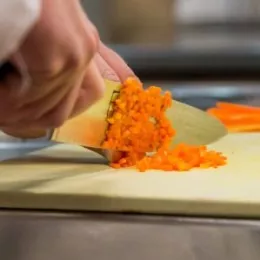In Ecuador, cacao has been around since prehistoric times. Ranked 4th in the world for cacao production after the Ivory Coast, Ghana and Indonesia, they help to grow 65% of the world’s production and export 86.45 million pounds of cocoa beans to the US.
 In celebration of National Chocolate Lover’s month, this February, the ProEcuador council in New York City visited ICC to discuss the intricacies of Ecuadorian cacao. As experts in exportable goods and services from Ecuador, alongside Ecuadorian chocolatier Jenny Samaniego of Conexion Chocolate, they shared their vast knowledge of cacao — from harvesting, fermenting and roasting to packaging and consumption — in a tasting of single origin cacao beans and chocolates. Below, check out what we learned about the different steps to turning cacao into chocolate!
In celebration of National Chocolate Lover’s month, this February, the ProEcuador council in New York City visited ICC to discuss the intricacies of Ecuadorian cacao. As experts in exportable goods and services from Ecuador, alongside Ecuadorian chocolatier Jenny Samaniego of Conexion Chocolate, they shared their vast knowledge of cacao — from harvesting, fermenting and roasting to packaging and consumption — in a tasting of single origin cacao beans and chocolates. Below, check out what we learned about the different steps to turning cacao into chocolate!





